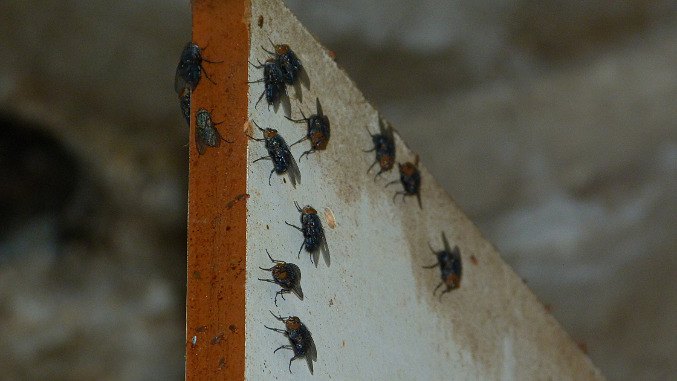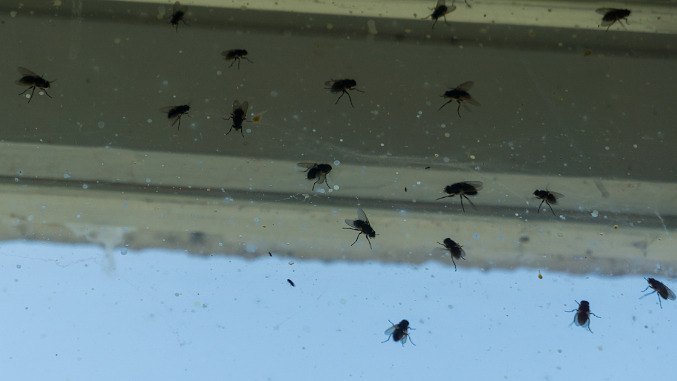
What are cluster flies and how to get rid of an infestation?
5 Minute Read
Dr Ian Bedford tells us everything we need to know about the 'bug of the month' for November, cluster flies.What are cluster flies?
As winter approaches, the shortening days and falling temperatures will have triggered most of Britain's native insects to enter the dormant stage of their lives, where they remain inactive within sheltered locations, protected from the elements as eggs, larvae, pupae, or adults, in order to survive the potentially lethal winter weather.While most overwintering insects burrow within the soil, amongst leaf litter or in various nooks and crannies around our gardens, some will have chosen to spend the bleak winter months inside our home, where they remain dormant in cool, dry, frost-free spaces, such as lofts.
It is not surprising when the Christmas decorations emerge from the loft that a lacewing, ladybird, or even a dormant queen wasp appears hidden amongst them. However, there is one overwintering insect, if found, is likely to be quite visible and considered to be an infestation -the cluster fly.

Where are cluster flies found?
Cluster flies are most prevalent around grassland areas, where the larval stage of their lifecycle lives underground and predates on earthworms. They usually have 2 or 3 generations a year, with the final adults emerging from the ground at the end of summer to find and feed on late season nectar.Throughout autumn days, as their name suggests, they’ll gather in groups often on the south facing walls of the houses that they’ve selected to be their winter refuge, where the flies will remain until the evening when the light begins to fade, crawling up walls and under eaves and into roof spaces, where they remain dormant for the winter months, sometimes in thousands.
Although cluster flies are similar to houseflies, their abdomens have light and dark grey patches, and their thorax have short golden hairs; they pose no health risk to us, although they can become a nuisance in homes that remain warm throughout the winter.
Although cluster flies are similar to houseflies, their abdomens have light and dark grey patches, and their thorax have short golden hairs; they pose no health risk to us, although they can become a nuisance in homes that remain warm throughout the winter.

How to manage cluster fly infestations
Eradicating hibernating cluster flies from a home loft during winter is not usually necessary since they won’t damage the house since spring usually brings them out of hibernation, and they leave the house naturally.However, if cluster flies become a problem, an industrial vacuum cleaner can remove them or, as a last resort, a professional pest controller can fumigate them, as long as there’s adequate ventilation and no bats in the loft.

About Dr Ian Bedford
Ian has been fascinated by the bug world for as long as he can remember. From studying butterflies on the South Downs as a youngster, he went on to pursue a career in Research Entomology and ran the Entomology Dept at the John Innes Centre in Norwich up until his recent retirement.VISIT WEBSITE

'Bug of the month'
Visit our 'bug of the month' archive.Every month Ian will shares his knowledge on how to protect your plants and gardens from preventable pest invasions while providing valuable insights into the insects regularly found in our gardens.
find out more
